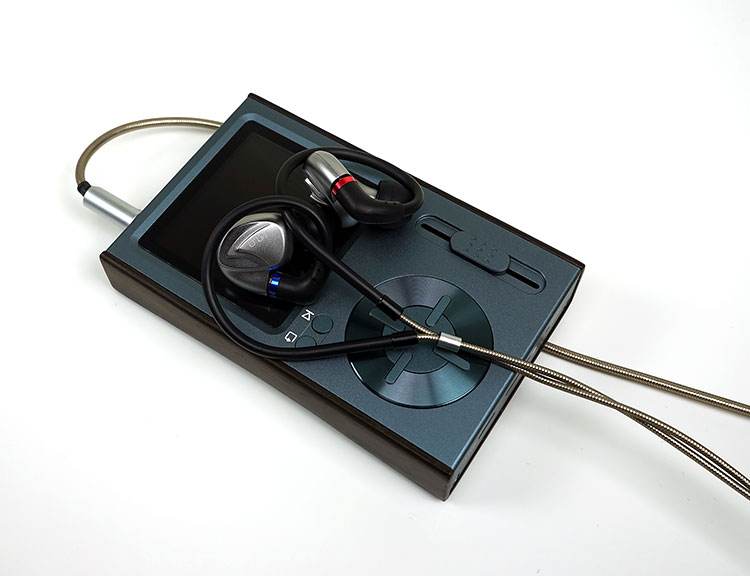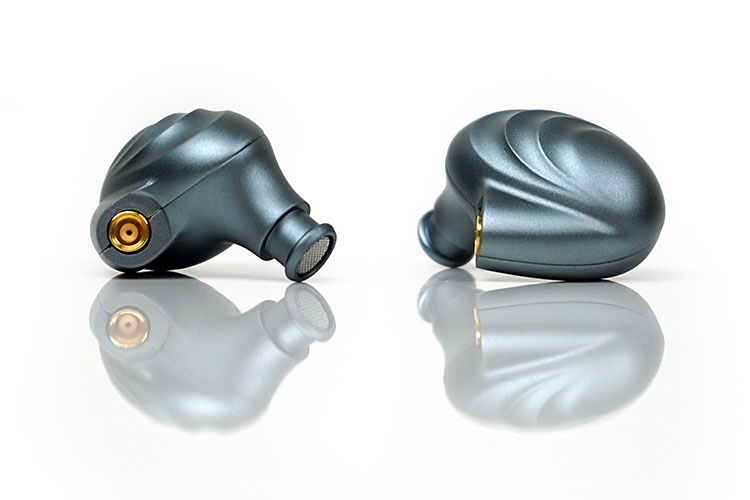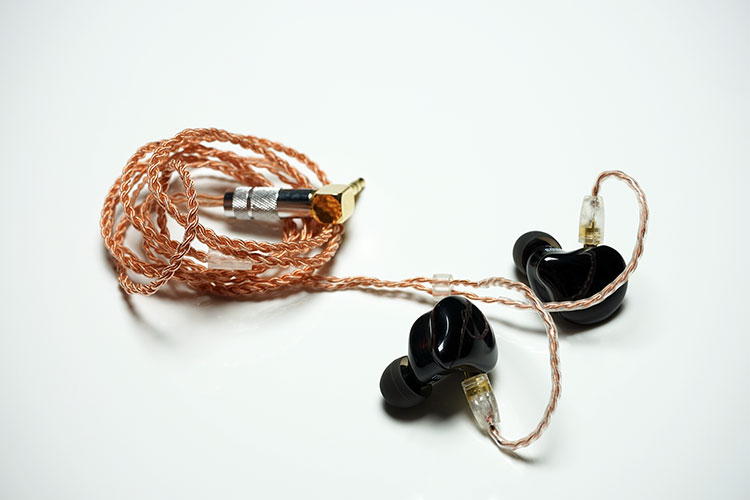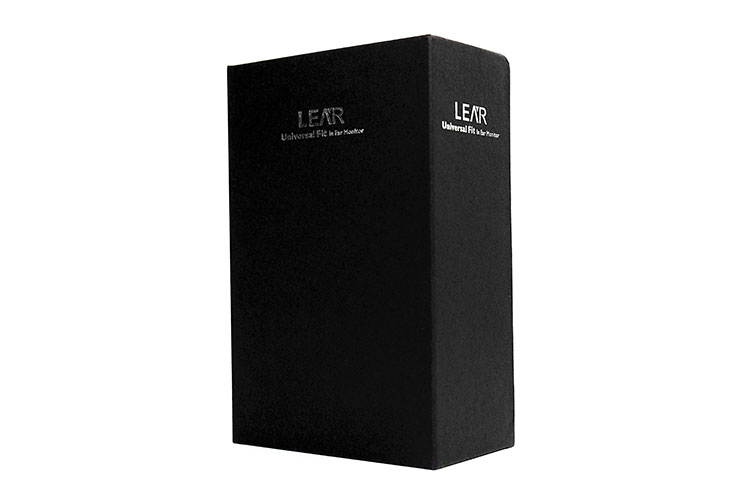Sound Impressions
Tonality & Presentation
The Kaleido is a warm-to-slightly darkish sounding IEM. The presentation is V-shaped with an emphasis on a moderate but consistent sub-bass emphasis and a dipped lower midrange combined with some vocal elevation or upper mids energy from 1-3k. The Kaleido top-end has a more relaxed approach with a 3-4k dip and a moderate lower treble energy up to around d8k before rolling off.
This is an IEM tuned from the bottom up with a stronger low-end emphasis and a splash of treble contrast to prevent it from sounding overly dark and shelved down. The choice of a 7mm is canny as it could easily have overwhelmed the dual balanced armature performance. Instead, the low-end is strong and very typical of a dynamic driver’s natural signature with a longish decay.
You could debate that the tuning is smooth and forgiving as opposed to clean and articulate. It can sound a little on the soft-side of things, particularly with the dipped mids pushing back the vocals a little.
Also, the 3-4k dip sucks a little odd harmonic balance from the Kaleido’s instrumental timbre which in turns contributes to that soft and warm tone. Combine that with a little lack of treble energy post 8k and you do get a feeling that the staging height and air are just a little lacking despite its excellent levels of depth.
Clearly, the tonality of the Kaleido is tuned for those who enjoy a colored V-shaped presentation. Listeners who have issues with sibilance and vocal edginess from over-energetic treble performances usually designed to compensate and contrast against elevated bass will want to give the Kaleido a listen.
Bass
Despite the slight softness in its response, I actually quite like the low-end of the Kaleido’s dynamic driver. It is quite colored and on the fun side of things but stops short of sounding annoyingly bloated.
From 20Hz right to almost 100Hz, it is almost linear and only starts to gently dip around 70Hz and continues to drop slowly to around 500Hz. The dB gap in the Kaleido’s sub-bass elevation down to the start of the low-mids is rather large, around 12-15dB so you get plenty of power and quantity. Much of the Kaleido’s warm tone is derived from that mid-bass elevation (combined with a 3-4k dip).
This is not a punchy or super tight bass response. Instead, the linear sub-bass to mid-bass performance sort of merges both warmth and power together into something to the equivalent of a 15″ sub in the back of your sub-compact sedan. Fun stuff for RnB, dubstep and some aspect of retro synth but perhaps lacking in enough texture and detail or tight enough for quicker paced recordings.
Mids
A game of two halves really with a dipped and slightly diffuse lower midrange from 500Hz to 800-900Hz to give it that V-shaped and slightly distant instrumental positioning. It does elevate and deliver a bit more energy from 800Hz to 2-3k. The instrumental timbre though is decidedly warm and even harmonic biased. The little 3-4k dip in the upper mids takes a little odd harmonic fusion away to help deliver that smoother tone.
This means the Kaleido V-shape is a little different to the likes of the IE800 for example, which dips heavily from 2-4k. Vocals are not as distant as they could have been. In fact, higher-pitched vocals have better than expected presence and sound a little cleaner than much lower range vocal pitches. Vocalists such as Beyoncé, with that massive 4-octave coloratura mezzo-soprano pitch, sounds smooth, easy-going, and sibilant free.
Some male vocals though struggle to be heard with the lower mids dip if instrumental passages get busy. Combine that with the good sub-bass power, warm timbre, a soft attack, and often you get a feeling of a lack of space and air in the Kaleido’s lower mids. I wouldn’t call it muddy, just thicker and richer sounding.
A good example is Bloodbound’s Patrik Johansson, a vocalist with tremendous range, but gets a little dominated by the ever-present warmth and quantity of their twin drum kick and guitar attacks. High impact instruments that tend to occupy the same space and will take a little something away when he starts to sing in baritone or lower.
In this instance, I would advise moving to the wider bore black silicone tips which will provide a more open sounding midrange and slightly less warmth.
Treble
There is a prominent dip from 3-4k that Lear has explained as ensuring the BA tuning doesn’t become too edgy and retain a natural smooth sound. Beyond that, the treble tuning is mildly elevated rather than prominent with only minor peaks from 5-8k which rarely, if at all, dominate.
The resulting sound is smooth, even harmonic biased, with nary a hint of harshness. Higher pitched harmonic balance will get a tiny edge with that 8k peak but the sparkle is toned down somewhat in favor of a softer very forgiving signature. You will not hear any splashiness, sibilance and for sure nothing brittle sounding.
However, those looking for a bit more extension, sparkle, and air might find the Kaleido a bit lacking. In some ways, the Kaleido is the antithesis of the effervescent but fatiguing iBasso IT03 treble performance.
Matchability
Efficiency
The Kaleido is rated at 10Ω and 109dB which is great news for smartphone and moderately powered DAP users. There should be enough power on moderate sources to drive the Kaleido to a satisfactory level and you should also find a fairly black background on sources or amps with slightly elevated noise floors. The Kaleido, like a lot of other hybrids tested, keeps hiss levels to a minimum. Users of the FiiO X5iii, X3iii, and Shozy DAP gear should be pleased to hear that.
However, as with a lot of hybrid IEMs I have tested, the Kaleido will require just a touch more gain or additional volume than pure BA designs. Compared to similar hybrid designs the Kaleido was almost the same in terms of volume or gain requirements. Using a HiBy R6 and R3 we found little need to adjust volume across 4 hybrid models tested including the Fidue A85 (20Ω, 107dB), the FiiO F9 Pro (28Ω, 106dB), and the iBasso IT03 (8Ω, 107dB).
Just one small note on the R6 matchability and that is the output impedance. Whilst the effect is small we did detect a small impedance skew that affected the treble response making ti sound marginally brighter. It is quite nuanced since the dynamic driver sounded unaffected but using an IEMatch 3.5mm cable did spot that small change-up.
Scaling & Synergy
Ideal Tone
I would advise a ‘neutral to natural’ sounding source to prevent the Kaleido from becoming overly muddy or smoothed over. Its stock signature is already quite smooth so clean sounding source/amps will ensure the Kaleido sounds optimal and possibly even throw in a touch more treble presence.
At the same time you do not want too much treble energy as on a few occasions I found pushing it too hard could lead to a slightly harder and edgier upper mids and lower treble from the BA drivers. Such was the case with the AMP1 card vs the AMP 6 card on the DX200 and DX150 from iBasso. Overall the DX150, even if slightly less resolving and neutral sounding had the slightly smoother lower treble compared to the cleaner and less forgiving DX200/AMP 1/Kaleido combo.
Favored Pairings
Really solid DAP pairings included the FiiO M7, HiBy R3, and the Cayin N3. The M7 delivers a really solid low-end with plenty of kick on the Kaleido. The R3 is probably the most refined sounding pairing with the best level of detail. The N3 sits somewhere in between the M7 and N3 with a nice low-end kick, a slightly cleaner lower treble, and more finesse than the M7 signature but not as detailed as the R3.
Select Comparisons
Fidue A85 “Virgo”
$399
Technical
The A85, or the Virgo, is a single dynamic, dual BA hybrid universal IEM. It is rated at 20Ω, 107dB though on our testing we found the A85 just to be very marginally louder at equal volumes. You won’t find yourself reaching for any real adjustment between the two.
The form factor of the A85 is much closer to the FiiO F9 Pro than the Kaleido. I think the Kaleido has a clear edge here with its custom universal shape providing a better seal and slightly more comfort levels. Whilst both have venting required for the dynamic driver to breathe, the isolation on the A85 only really measures up the Kaleido with foam tips. The Kaleido is good to go with the stock narrow bore silicone tips. I give durability points to the A85. Its aluminum shell is going to be a lot tougher than the Kaleido’s acrylic shell.
Performance
Tonally, the A85 is a little more neutral and n-shaped than the V-shaped warmer presentation of the Kaleido. Vocals are further forward, the staging is a little more intimate though the mid-bass has some decent warmth and impact. The Kaleido has much more sub-bass power as well as mid-bass warmth but a dipped midrange means vocals are further back and sound slightly veiled in comparison.
Treble is a little closer with both opting for a smoother more relaxed tuning from their BA combo. The A85 must just edge it here in terms of upper mids and lower treble clarity and odd harmonic fusion. The top-end is a little further forward than the Kaleido but nothing on the level of the F9 Pro or IT03. Both have a rolled-off upper treble response falling away around 7-8k so neither really excels in terms of sparkle.
FiiO F9 Pro
$139.99
Technical
Coming in at just over half the price of the Kaleido is the F9 Pro at $139.99. It also has a similar hybrid configuration with a single dynamic driver and dual BA. The rating is a little less efficient at 28Ω and 106dB but in real-life testing, we didn’t find much of a volume or driving difference between the two. Both are pretty good on higher noise floors and are not as sensitive as BA designs.
The form factor is very similar to that of the A85 with a shallow but smooth oval-shaped aluminum build. It is tougher and more durable than the Kaleido acrylic but not as ergonomically shaped for comfort and isolation. The design of the Kaleido has a bit more individualism about it for me also.
Performance
The F9 Pro is a little less V-shaped than the Kaleido and not quite as warm and smooth sounding. This is primarily due to a slight roll-off at around 60-50Hz compared to the sustained elevation of the Kaleido right down to 20-30Hz. You get a lot more power and a bit more warmth as a result compared to the F9 Pro which exhibits a leaner note and a cooler timbre.
Both have a similar dip and rise from 500Hz to 2k but the F9 Pro doesn’t have the same level of 3-4k drop and retains a little more energy up to 6-7k than the Kaleido. From there you get a rather focused spike from 7-8k which will bring a lot more treble intensity and odd harmonics into the F9’s timbre. The F9 Pro will sound the cleaner of the two with better instrumental separation but it is also prone to sounding edgier with more sibilance, particularly in female vocal performances.
By contrast, the Kaleido is much more subdued, much warmer, and more even harmonic focused in its treble performance and thus a little darker sounding. I personally do not think either has a massive top-end extension but the F9 Pro does exhibit a little more air and sparkle than the Kaleido.
iBasso IT03
$259
Technical
Hard to believe it has been around 2 years since the IT03 was first launched, time flies fast for the first IEM that I have used with a custom universal fit. And yes, both the Kaleido and IT03 have similar levels of comfort and fit. My only concern with the IT03 was the lack of a lip on the nozzle meaning from time to time tips fell off or stayed in my ear when the IEM came out. Also, the IT03 is huge compared to the Kaleido though the driver they use is 9mm compared to the Kaleido’s 7mm.
Inside it is a similar deal with a single dynamic driver and dual BA hybrid design. Ratings wise the IT03 is fairly efficient at 8Ω and 107dB and between the two there is not much difference in terms of volume matching and ease of driving.
Performance
Both will pair well with most sources, however, the IT03 treble is fussier for me and I prefer to run it balanced with a nice low resistance 8-wire warm copper cable. I might be more sensitive to upper treble odd harmonic emphasis the IT03 can spit out if not paired properly or in single-ended cable mode. Once sorted with a pair of foam tips the treble balance is better.
Musicality
Both are tuned for musicality and fun with a bass emphasis but the greater treble presence means the IT03 will sound the brighter and cleaner of the two. The Kaleido’s sub-bass might have the edge between the two in terms of elevation, quantity, and power but it also generates a fair bit more warmth than the IT03.
Both have a lower-mids dip but the Kaleido dip is a little greater so instrumental presence is a bit further back than the IT03. Instrumental timbre is warmer and slightly thicker sounding than the IT03’s neutral tone, however, I find instrumental separation to be just a tiny bit better on the IT03.
Vocal positioning is not that dissimilar however tonally the Kaleido is thicker and smoother and less prone to sibilance or edginess. The IT03 vocals will sound cleaner with a little more air and space around them.
Treble differences
Treble is the big difference maker between the two and as mentioned I have to do a lot of tweaking on the IT03 such as balanced cables and foam tips to get the balance right. Without which it can sound hard, brittle and distracting, particularly its pronounced 7k peak. The Kaleido takes a much more subdued path sounding much smoother, less edgy with more percussion body. It just lacks a little sparkle and air compared to the IT03. This is going to come down to pure preference between these two – treble or sub-bass, warm or clean – take your pick.
Our Verdict
The Lear Kaleido is an attractive, well-built, and very comfortable fitting hybrid monitor. It has a colored emphasis on a smooth, bass orientated V-shaped presentation but has a darker tone and warmer timbre than its competitors.
What I would like though is a quieter less stiff cable. The SPC tonality ain’t bad actually, it doesn’t sound overly compressed compared to cheaper OFC equivalents. However, silver for me does the trick nicely. It will add a pleasing level of clarity and some additional dynamic range if you are using an 8-wire. Having said that at just over $200 I am not sure I could justify a cable at almost the same price. The Kaleido pricing is competitive, with an aftermarket cable it becomes a bit pricey.
Who should buy this? Definitely, modern RnB lovers, dubstep, and trance fans, especially if the vocal is higher pitched. For those genres, the Kaleido is has a potent sub-bass response. Clearly, Lear has taken note of those that would like the power of a dynamic driver but not the tizzy heat of some of the balanced armature tunings. You won’t get a lot of sparkle with the Kaleido but you will not get a lot of sibilance or fatigue either. This is a very smooth sounding IEM.
Kaleido Technical Impressions
- LEAR’s custom-tuned dual Balanced Armature + 1 LEAR’s ⌀ 7mm Dynamic Driver hybrid design
- Soldering with Hi-Fi grade 4% silver solder.
- Frequency Response : 10Hz-20kHz
- Impedance: 10ohm @1000 Hz
- Sensitivity: 109dB @1mW






